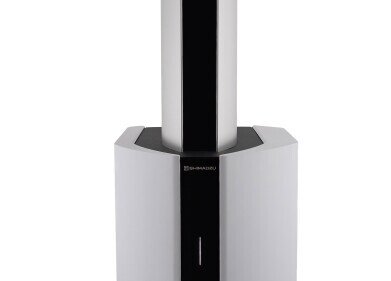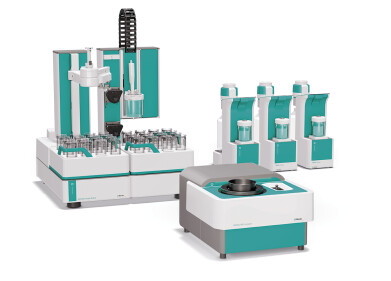Mass Spectrometry & Spectroscopy
What's the Difference Between IR and NIR Spectroscopy?
May 03 2022
Spectroscopy, a field concerned with how matter absorbs and emits light, is one of the most useful analytical techniques available to scientists. Like most technical fields, there are several different branches to choose from, each with its own benefits. IR and NIR Spectroscopy are two of the most popular methods and while they do share some similarities, they’re both unique in their own right.
Want to know more? Read on as we take a closer look at IR and NIR Spectroscopy and spotlight the main differences between the two.
A short intro to Spectroscopy
Spectroscopy uses light absorption and emission patterns to determine the physical and chemical characteristics of matter. To generate data light is split into constituent wavelengths to create a spectrum. Individual wavelengths interact with different compounds in different ways, which allows researchers to use data to map the physical and chemical properties of a sample.
As mentioned earlier, there are several different types of spectroscopy methods within the umbrella field. Each type is defined either by the type of light source used to trigger an interaction between constituent wavelengths and compounds present in the sample, or the region of the electromagnetic spectrum being analysed. IR and NIR Spectroscopy both fall into the latter category.
IR Spectroscopy
Infrared (IR) Spectroscopy measures absorption, emission and reflection patterns within the infrared wavelength range, around 700 to 1000 nm. Light in this region of the electromagnetic spectrum has a lower frequency and longer wavelength than light visible to the naked eye. IR Spectroscopy can be used with samples in all phases, including liquids, gases and solids.
It’s founded on the principle that molecules absorb frequencies based on their chemical structure. So, vibrations and associated frequencies can be used to identify and quantify the chemical compounds present in a sample. Fourier transform infrared (FTIR) spectrometers are one of the most common instruments used for IR Spectroscopy. It’s fast, cost effective, non-invasive and widely applicable, making it one of the most popular types of spectroscopy.
NIR Spectroscopy
Like IR Spectroscopy, NIR Spectroscopy uses spectral data to characterise matter. The main difference is the region of the electromagnetic spectrum studied, with NIR Spectroscopy focusing on the 780 nm to 2500 nm range. This is just outside the range normally visible to the naked eye. Light in the near-infrared region interacts with compounds in a unique way, which allows scientists to map the physical and chemical characteristics of a sample.
IR Spectroscopy and NIR Spectroscopy are both exceptionally useful analytical tools used across a wide range of sectors and industries. However, they’re not used exclusively by scientists. Find out more about other types of spectroscopy, including X-Ray Spectroscopy, UV-Visible (UV/VIS) Spectroscopy, which was recently used to improve the development of mRNA vaccines, in ‘What Are the Different Types of Spectroscopy?’
Digital Edition
Lab Asia 31.2 April 2024
April 2024
In This Edition Chromatography Articles - Approaches to troubleshooting an SPE method for the analysis of oligonucleotides (pt i) - High-precision liquid flow processes demand full fluidic c...
View all digital editions
Events
Apr 22 2024 Marrakech, Morroco
Making Pharmaceuticals Exhibition & Conference
Apr 23 2024 Coventry, UK
Apr 23 2024 Kintex, South Korea
Apr 23 2024 Seoul, South Korea
Apr 24 2024 Jakarta, Indonesia




.jpg)













